In a previous blogpost I demonstrated some methods for mapping social relations as well as emotions/liked-and-less-liked-parts-of-a-process. In this blogpost, I will show some ideas on documenting the processes with your participants by writing step-by-step instructions together.
I’m not the first one to try something this, for example CARD¹ or Semistructured Models². But I wanted something more lightweight.
Here is what I came up with:
Step 1: List tasks
First we need an overview of what the participant does. It would be ideal to collect these activities³ together with the participant by observing him/her, however this is not always possible and even if we, lets say, would do a few hours of observation, we still might miss important activities (like the setup when starting work or the cleanup routine when ending it).
My first ideas was to ask what the participant does and to write it down with the participant.
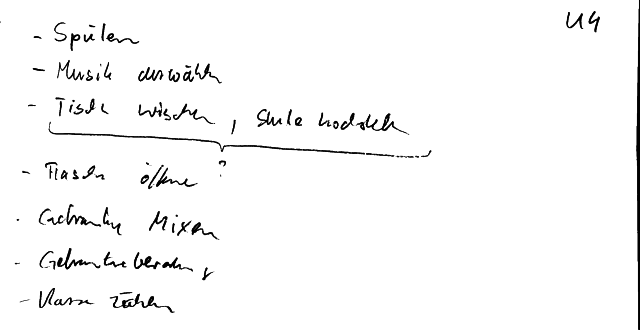 Image: Simple list of tasks. Reads: Washing dishes, choose music, clean tables,
put up chairs (?), open bottles, mix drinks, advice for choosing drinks,
count money
Image: Simple list of tasks. Reads: Washing dishes, choose music, clean tables,
put up chairs (?), open bottles, mix drinks, advice for choosing drinks,
count money
However, this was a bit too general in my eyes. To make it more concrete, I asked for things that the participant was doing just now and some minutes ago, too. This makes it somehow more reliable since it is likely that recent activities are remembered. In addition, these remembered recent activities have actually been done in (possible) contrast to activities in general which may be written down because they should have been done.
To ease this for me, I created a little template:
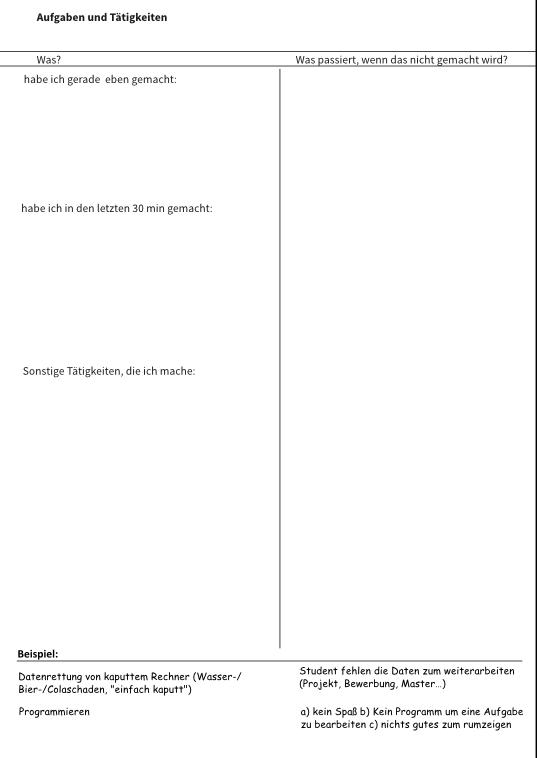 Image: task list template Reads: Tasks and Activities. What? What happens if it is not done? Just done. Done in the last 30min. Activities in general
Image: task list template Reads: Tasks and Activities. What? What happens if it is not done? Just done. Done in the last 30min. Activities in general
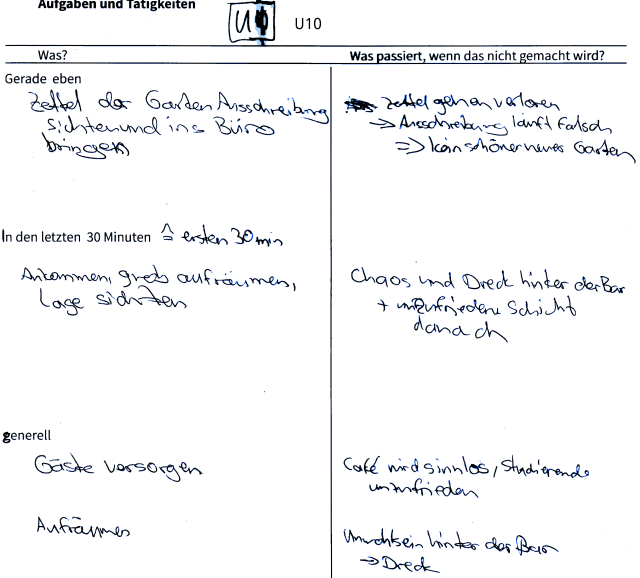 Image: task template in use
Image: task template in use
You see that there is a second column, asking for “effects if the activity in not done”. This can help to focus on the (seemingly) most relevant activities first.
Before creating the list, I show an example how the result may look like. The example is concerned with a very different domain (to avoid biasing the participant), so people working in a cafe got a »How I repair a computer«-Example from someone who volunteers in a hackerspace repairing computers (hmm, that someone is me).
Step 2: Describing the activity(s)
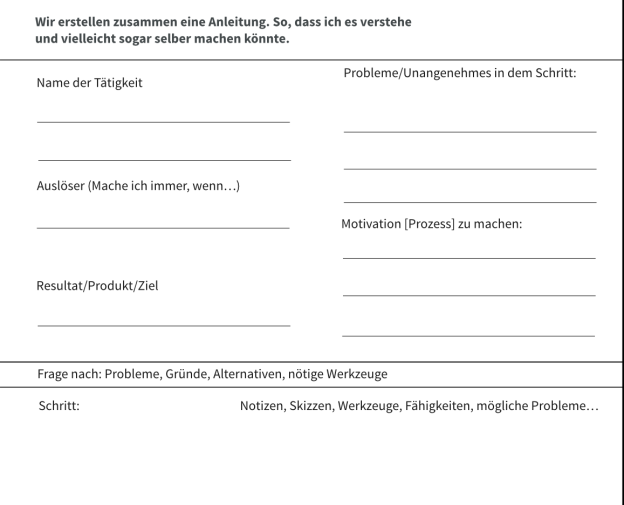 Image: process documentation template
Image: process documentation template
After having an overview of activities I choose the one that appears most relevant and ask the participant to document this activity with me. I frame it as possible instructions which could be used to teach somebody else the activity. I show an example for this too.
I provide a template, with an »activity name« and a »notes/sketches« column, and fields for basic infos like the name of the activity, the trigger, the result, the risks/problems and the motivations to do the activity.
When documenting the process, the participants only write down the general steps (I hoped they would include some sketches, hints etc. too). After they are satisfied I go through their list and ask questions:
You wrote “Distributing team work” – how do you do this?
or
This point “Let the milk cool down” – what happens if you skip this?
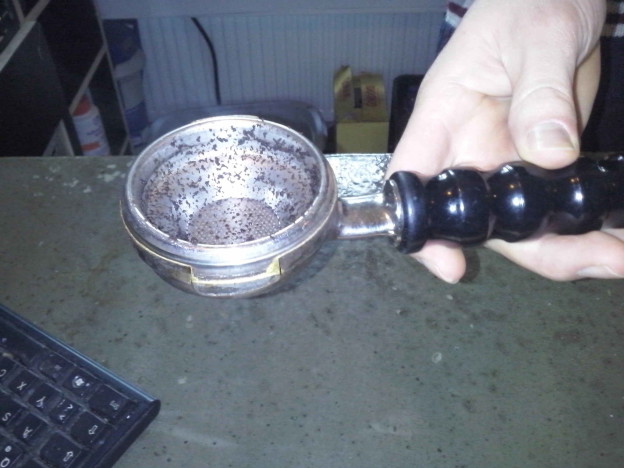 Image: documentation & observation combined
Image: documentation & observation combined
In addition, I may ask for a demonstration:
Can you show me that coffee-container-thingy you need to clean?
…How is that thing attached to the coffee machine?
I add the information I asked for as notes and sketches, either in another color or by creating references to another note sheet using (latin) numbers.